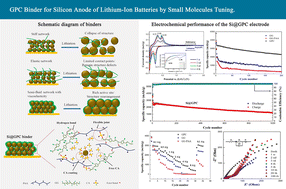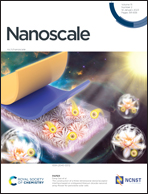A semi-fluid multi-functional binder for a high-performance silicon anode of lithium-ion batteries†
Abstract
Currently, a variety of binders are developed to inhibit the rapid capacity fading of Si. The Si anodes are mainly enhanced by the chemical bonding effect on the surface of conventional solid-state binders. However, with a huge volume change of silicon, solid binders are easily deactivated. Herein, a semi-fluid binder termed GPC is designed based on a viscoelastic crosslinking network with abundant active sites and self-healing performance. The backbone of the binder network is in situ synthesized using guar gum (GG), polyacrylic acid (PAA), and citric acid (CA). Serving as the flexible joints and the plasticizer of the network, CA small molecules remarkably improve the viscoelasticity of the binder to tolerate the volume change of Si via rearranging particles in the network during cycling. Moreover, CA can form a layer of surface coating on Si to stabilize the SEI for long-term electrochemical performance. As a result, the Si@GPC electrode shows excellent cycling stability and exhibits a superb capacity of 1292 mA h g−1 after 1000 cycles at 2 A g−1. This work illustrates the advantages and prospects of designing semi-fluid binders for high-performance batteries.



 Please wait while we load your content...
Please wait while we load your content...